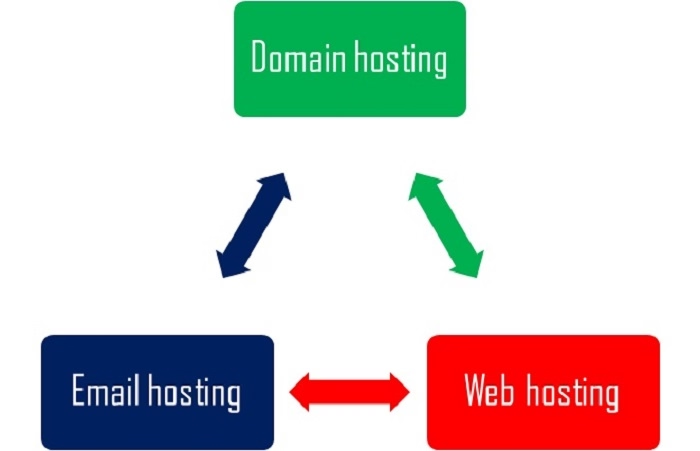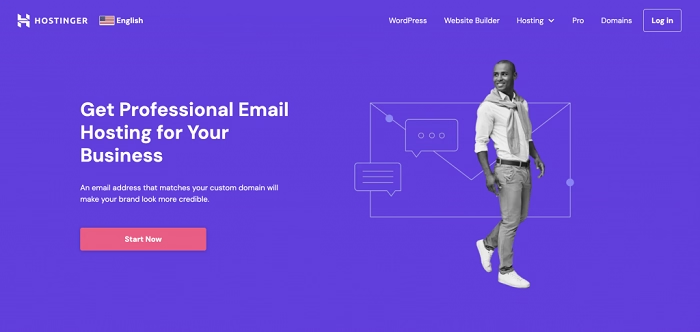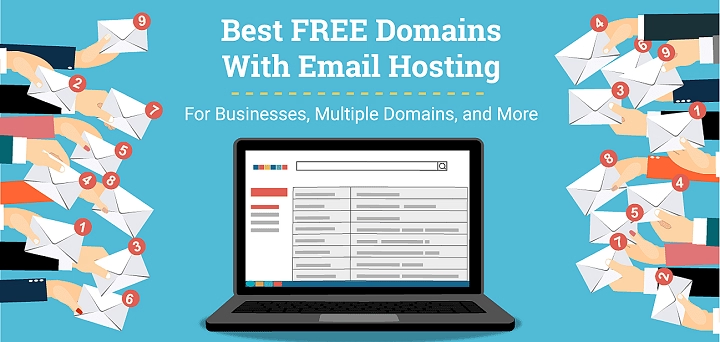If you want to create a professional email address like [email protected], you’ll need more than just a domain name—you’ll need domain email hosting. Whether you’re a freelancer, a small business owner, or running a large organization, domain-based email hosting adds credibility, improves brand identity, and keeps your communication secure and organized.
This guide explains everything you need to know about domain email hosting, how to set it up, what features to expect, and which providers are leading the market in 2025.
What Is Domain Email Hosting?

Domain email hosting is a service that allows you to create and manage custom email addresses using your domain name (e.g., [email protected]). Instead of using a free Gmail, Yahoo, or Outlook address, you get a professional and branded email identity.
The hosting provider stores your email data on its servers and enables you to send, receive, and manage email using desktop apps, webmail, or mobile devices.
Why You Need Domain Email Hosting
Using a domain-based email offers several key advantages:
- Professionalism: Instantly makes your emails look more credible and official.
- Branding: Reinforces your company name in every message you send.
- Security: Comes with spam protection, encryption, and data backups.
- Organization: Lets you create multiple accounts (e.g., info@, support@, sales@).
- Control: You can manage employee accounts, reset passwords, and set usage policies.
Whether you’re just launching or scaling up, domain email hosting is essential for serious communication.
How Does Domain Email Hosting Work?
Here’s a simplified process of how it works:
- Buy a Domain Name
- Use a domain registrar like GoDaddy, Namecheap, or Google Domains.
- Choose an Email Hosting Provider
- This provider will host your mailboxes and manage your email data.
- Point DNS to Your Email Host
- Update your domain’s MX (Mail Exchange) records to direct email to your provider.
- Create Mailboxes
- Set up email accounts like [email protected], [email protected], etc.
- Access Your Email
- Use webmail, Outlook, Gmail (via IMAP), or mobile apps to check your inbox.
Once set up, your email will work like any other—but with your own domain instead of a generic provider’s.
Best Domain Email Hosting Services in 2025
Here are some of the top providers to consider:
| Provider | Key Features | Starting Price |
| Google Workspace | Gmail interface, Google Drive, Meet, Docs | $6/user/month |
| Microsoft 365 | Outlook interface, Teams, OneDrive, Office apps | $6/user/month |
| Zoho Mail | Ad-free email, free plan for small teams | Free & paid plans |
| ProtonMail | Encrypted, privacy-focused email hosting | From $4/month |
| Namecheap Email Hosting | Simple hosting bundled with domain | From $1.24/month |
| Fastmail | Fast interface, no ads, calendar and contact syncing | From $3/month |
| Bluehost Email | Free email included with hosting plans | Included with hosting |
Choosing the Right One:
- For Google lovers: Google Workspace
- For Microsoft users: Microsoft 365
- For privacy: ProtonMail
- For budget-friendly: Zoho Mail or Namecheap
- For basic websites: Bluehost or Hostinger
How to Set Up Domain Email Hosting (Step-by-Step)
Step 1: Buy a Domain Name
Get one from:
- GoDaddy
- Namecheap
- Google Domains
- Bluehost
Step 2: Choose Your Email Hosting Provider
Sign up with a provider that suits your needs and budget.
Step 3: Update DNS Records
Go to your domain registrar, locate DNS or MX settings, and change the MX records to the values provided by your email host.
Example:
yaml
CopyEdit
Priority: 1
MX Record: aspmx.l.google.com (for Google Workspace)
Step 4: Create Email Accounts
Log into your email hosting dashboard and create custom addresses.
Examples:
Step 5: Access and Sync Your Email
Use:
- Webmail (like mail.yourhost.com)
- Desktop apps like Outlook or Thunderbird
- Mobile apps (iOS/Android Mail)
Use IMAP or Exchange settings for syncing across devices.
Features to Look for in Domain Email Hosting

- Custom email domains
- Spam and virus protection
- Ample storage (5GB to unlimited)
- Calendar and contact sync
- IMAP/SMTP/POP3 access
- Webmail access
- Mobile and desktop compatibility
- Data encryption and backups
- Admin panel for account control
Domain Email Hosting vs Web Hosting Email
Some web hosts (like Bluehost, Hostinger, SiteGround) include free email accounts with your hosting plan. However, these are often basic and lack features like:
- Full spam filtering
- Third-party app integrations
- Admin control panels
- High uptime or delivery rates
For business use, dedicated email hosting (like Google Workspace or Zoho) offers more reliability, better deliverability, and professional features.
Can You Use Gmail With Your Domain?
Yes. With Google Workspace, you can:
- Use Gmail’s interface with your domain email (like [email protected])
- Access Google tools like Calendar, Drive, and Docs
- Manage all emails through Google Admin Console
It’s a popular choice for small businesses, startups, and entrepreneurs who want a sleek experience with powerful tools.
Common Use Cases for Domain Email Hosting
- Startups: Create branded emails from day one
- Agencies: Manage multiple team addresses (sales@, support@, etc.)
- Freelancers: Present yourself professionally to clients
- E-commerce: Handle order, delivery, and support messages
- Educational institutions: Provide student and staff email addresses
No matter your industry, domain email gives your communication a polished, professional look.
Frequently Asked Questions
What is domain email hosting?
It’s a service that allows you to create and manage email accounts using your domain name (e.g., [email protected]).
Do I need a website to have a domain email?
No. You only need to own the domain. You don’t need an active website to set up domain email hosting.
How much does domain email hosting cost?
It ranges from free (Zoho Mail’s basic plan) to $6–$12 per user/month for premium services like Google Workspace or Microsoft 365.
Can I use my domain email with Gmail or Outlook?
Yes. You can either forward your domain emails or use Gmail/Outlook as the main platform through Google Workspace or Microsoft 365.
Is domain email hosting secure?
Reputable providers offer encryption, spam filtering, and two-factor authentication to keep your email secure.

